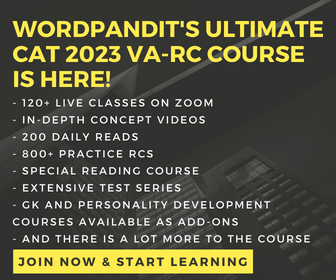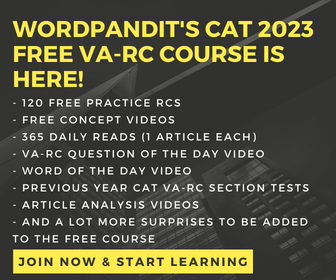What is Critical Thinking?
Critical thinking, in general, refers to higher-order thinking that questions assumptions. It is a way of deciding whether a claim is true, false, or sometimes true and sometimes false, or partly true and partly false.
-Wikipedia
Click (+) to expand
Critical Thinking: The Process
Critical thinking is a process. A more detailed definition offered by Wikipedia goes something like this: Critical thinking has been described as “reasonable reflective thinking focused on deciding what to believe or do.”It has also been described as “thinking about thinking.” It has been described in more detail as “the intellectually disciplined process of actively and skillfully conceptualizing, applying, analyzing, synthesizing, and/or evaluating information gathered from, or generated by, observation, experience, reflection, reasoning, or communication, as a guide to belief and action” More recently, critical thinking has been described as “the process of purposeful, self-regulatory judgment, which uses reasoned consideration to evidence, context, conceptualizations, methods, and criteria.” Within the critical social theory philosophical frame, critical thinking is commonly understood to involve commitment to the social and political practice of participatory democracy, willingness to imagine or remain open to considering alternative perspectives, willingness to integrate new or revised perspectives into our ways of thinking and acting, and willingness to foster criticality in others.
Critical thinking, when made part of educational syllabi, becomes critical reasoning, a method of reaching to conclusions of our own. In simple terms, it is art of finding holes in someone else’s argument? But what is an argument?
What is an argument?
An argument is a simple set of three things:
A. FACTS, which are also referred to as premise in logic.
I am 5 feet 7 inches tall is a fact.
B. CONCLUSIONS, which is the result that an argument arrives at.
In the statement, ‘I can reach the top shelf with my hands because I am 5 feet 7 inches tall’, the part ‘I can reach the top shelf’ is the conclusion or result.
C. ASSUMPTION, the third and the most critical part of our argument. Let’s look at the above statement once again: ‘I can reach the top shelf with my hands because I am 5 feet 7 inches tall’. We know the fact and we know the conclusion. What is the assumption? Simple, just answer the question why can I reach the top shelf? Because I am 5 feet 7 inches tall. That means that if one is 5 feet 7 inches tall, one can reach the shelf. That is the assumption. If X is 5 feet 7 inches tall or more, he will be able to reach the top shelf irrespective of anything. What happens if he is 5 feet 6 inches tall? Well, in that case we cannot say anything. That is outside the scope of our argument.
In simple laymen terms, this is what an argument would consist of always. The key points for a student include:
1. Ability to discern facts from conclusions.
2. Ability to spot the leap that any author makes while moving from facts to conclusions or vice-versa. It is this leap that contains the assumption.
CR questions can be broadly divided into certain categories:
- Identify the assumption
- Strengthen the argument
- Weaken the argument
- Miscellaneous question types
We will have a look at these questions types one at a time and try to cover the basics for each.
Identify the assumption
Let’s take the simple argument:
Mac: I can’t believe I saw Preet drinking a Coke.
John: Why?
Mac: Because Preet works for Pepsi.
What is the assumption made by Mac?
Is it any of the following:
Preet prefers Coca Cola.
Preet hates his job.
Preet is a spy for Pepsi.
Obviously, it is not. It is something far simpler. According to Mac, anyone who works for Pepsi cannot drink Coca-cola. Assume anything else and you will not be able to reach the conclusion. When we say reach the conclusion, adopt this process. Add the assumption to the facts given in the argument. If you reach the same conclusion as stated in the argument, then you have made the right one else it is the incorrect one.
Supplement this example with the one given in the slide.
Weaken an argument
Have a look at the argument:
On Thursday I wore a blue shirt.
On Friday I had a headache.
Therefore, my blue shirt gives me a headache.
This is a very simple version of a CR argument. But would you say to challenge it and weaken it (that is cast doubt on the conclusion reached)?
Simple answers: Perhaps I was out all night last Thursday.
Maybe I live next door to the national highway.
In each case, we have an alternate reason for the same set of facts. Or in a way, we are challenging the assumption of the argument: the cause of the headache was the shirt and nothing else.
In reasoning terminology, label the argument as the type where a casual relationship has been turned into a cause and affect one.
Strengthen an argument
In case one has to strengthen the same argument as given in the ‘weaken the argument’ section, what would one say?
Simply say: My health is affected by the clothes I wear.
This makes the argument water tight, by working again on the assumption of the argument.
So simple thumb rules:
Weaken the argument: challenge the assumption
Strengthen the argument: add weight to the assumption.
Miscellaneous Question types **
Other than the three types, there are a number of different question types that you would encounter in CR. These include:
1. Must be true questions, framed along these lines:
“If the statements above are true, which one of the following must also be true?”
“If the information above is correct, which one of the following conclusions can be properly drawn on the basis of it?”
“The statements above, if true, most strongly support which one of the following?”
“Which one of the following can be properly inferred from the passage?”
“Which one of the following is most strongly supported by the information above?”
Learning through an example of the question type:
Flavonoids are a common component of almost all plants, but a specific variety of flavonoid in apples has been found to be an antioxidant. Antioxidants are known to be a factor in the prevention of heart disease.
Which one of the following can be properly inferred from the passage?
(A) A diet composed largely of fruits and vegetables will help to prevent heart disease.
(B) Flavonoids are essential to preventing heart disease.
(C) Eating at least one apple each day will prevent heart disease.
(D) At least one type of flavonoid helps to prevent heart disease.
The first step: identify your task. We need to provide a conclusion. What is our conclusion in laymen terms? That one could get help in heart disease from a certain type of flavonoid. Not all types would help but a certain type would for sure. Which option highlights this option of a one of the types helping us? Option D. the other options are too specific to be the answer, are they not?
- Main point of the argument questions
The question is phrased as:
“Which one of the following most accurately expresses the main conclusion of the argument?”
“Which one of the following most accurately expresses the conclusion of the journalist’s argument?”
“Which one of the following most accurately restates the main point of the passage?”
“The main point of the argument is that”
Learning through an example of the question type:
I agree that Hogan’s actions resulted in grievous injury to Winters. And I do not deny that Hogan fully realized the nature of his actions and the effects that they would have. Indeed, I would not disagree if you pointed out that intentionally causing such effects is reprehensible, other things being equal. But in asking you to concur with me that Hogan’s actions not be wholly condemned I emphasize again that Hogan mistakenly believed Winters to be the robber who had been terrorizing west-side apartment buildings for the past several months.
Which one of the following most accurately expresses the conclusion of the argument?
(A) Hogan should not be considered responsible for the injuries sustained by Winters.
(B) The robber who had been terrorizing west-side apartment buildings should be considered to be as responsible for Winters’s injuries as Hogan.
(C) The actions of Hogan that seriously injured Winters are not completely blameworthy.
(D) Hogan thought that Winters was the person who had been terrorizing west-side apartment buildings for the last few months.
The main point of the argument is essentially the summary of the paragraph that we need to work out. Let’s keep our approach simple: all we do is first identify the summary in our words and then we match it with the options. The argument simply states that we cannot totally blame Hogan as was mistaken and his actions were not done intentionally. Which option goes by this logic? I guess option C is screaming at us, isn’t is?
- Resolve the paradox questions:
A resolve the paradox question is framed something like this:
“Which one of the following, if true, would most effectively resolve the apparent paradox above?”
“Which one of the following, if true, most helps to resolve the apparent discrepancy in the passage above?”
“Which one of the following, if true, most helps to explain the puzzling fact cited above?”
“Which one of the following, if true, most helps to reconcile the discrepancy indicated above?”
“Which one of the following, if true, most helps to resolve the apparent conflict described above?”
Learning through an example of the question type:
Provinces and states with stringent car safety requirements, including required use of seat belts and annual safety inspections, have on average higher rates of accidents per kilometer driven than do provinces and states with less stringent requirements. Nevertheless, most highway safety experts agree that more stringent requirements do reduce accident rates.
Which one of the following, if true, most helps to reconcile the safety experts’ belief with the apparently contrary evidence described above?
(A) Annual safety inspections ensure that car tires are replaced before they grow old.
(B) Drivers often become overconfident after their cars have passed a thorough safety inspection.
(C) The roads in provinces and states with stringent car safety programs are far more congested and therefore dangerous than in other provinces and states.
(D) Psychological studies show that drivers who regularly wear seat belts often come to think of themselves as serious drivers, which for a few people discourages reckless driving.
Explanation: The conclusion reached above is confusing for sure. States with stringent law would obviously have lower accident rates, but alas, that does not happen here. What went wrong? That is what we have to identify. Let’s break down the information given to us: the accident rates per kilometre are higher in these states. How do we define these rates? Obviously on the basis of traffic. If the street is crowded with cars and another is empty, the one with a greater number of cars will have a higher rate of accidents. This gives us the explanation we need. The more the congestion, the more the accidents per kilometre, and thus our requirement for stringent laws. This even explains why we have stringent laws in the first place: to counter the traffic challenge. This is what we do in a paradox question: break down the question into smaller bits, find the problem part and rectify that. It is only one part of the argument that is weak and needs some additional support. Identify that part.
- Method of reasoning questions:
The ‘method of reasoning’ questions are structured like the following examples:
“The method of the argument is to”
“The argument proceeds by”
“The argument derives its conclusion by”
“Which one of the following describes the technique of reasoning used above?”
“Which one of the following is an argumentative strategy employed in the argument?”
“The argument employs which one of the following reasoning techniques?”
Learning through an example of the question type:
Garbage in this neighborhood probably will not be collected until Thursday this week. Garbage is usually collected here on Wednesdays, and the garbage collectors in this city are extremely reliable. However, Monday was a public holiday, and after a public holiday that falls on a Monday, garbage throughout the city is supposed to be collected one day later than usual.
The argument proceeds by
(A) treating several pieces of irrelevant evidence as though they provide support for the conclusion
(B) indirectly establishing that one thing is likely to occur by directly ruling out all of the alternative possibilities
(C) providing information that allows application of a general rule to a specific case
(D) generalizing about all actions of a certain kind on the basis of a description of one such action
If you have a close look at the answer options above, you would realize that all of them use generic terms. They basically take facts and information provided to us in the argument and convert into various possible general options. Now the choice in front of us is to make the best fit. Let’s eliminate options. That way is the easiest to solve this question type:
Option 1 is rejected as there is no irrelevant evidence.
Option 2 is ruled out as no alternative possibilities are discussed. Only one type of information is given, that is when is garbage collected.
Option 4 is rejected as these is no generalization. In fact, the reverse is true. A general rule is being applied to a specific case. This leads us to the correct answer.
- Flaw in reasoning question:
The ‘flaw of reasoning’ questions are structured like the following examples:
“Which one of the following most accurately describes a flaw in the argument’s reasoning?”
“The reasoning in the argument is most vulnerable to criticism on the ground that the argument”
“The reasoning above is flawed because it fails to recognize that”
“A questionable aspect of the reasoning above is that it”
“The reasoning in the argument is fallacious because the argument”
Learning through an example of the question type:
“Some people claim that the values that this country was built on are now being ignored by modern-day corporations. But this is incorrect. Corporations are purely profit-driven enterprises, beholden only to their shareholders, and as such they can only assess objects based on their value.”
Identify the flaw in the argument above.
The term “value” is used in the example above in two different senses: first in a moral or ethical sense and then in a monetary sense. This shift in meaning undermines the author’s position.
Flaw in reasoning questions demand a quick perception on part of the student. You need to be able to identify the faulty assumptions made by the author, the introduction of ambiguous terms & the subtle changes in meaning. In a way, it is about picking up the subtle nuances in reading.
Postscript
Edit page articles are essentially CR arguments. As an exercise, spot some errors in the arguments presented in edit pages of newspapers. Treat them as a series of facts and conclusions, with innumerable assumptions in the middle. Once you are able to delineate opinions from facts, well reasoned arguments from the poorly reasoned ones, you are well on your way to become a CR champ.
And in case you have any doubts, feel free to drop us a message.

















